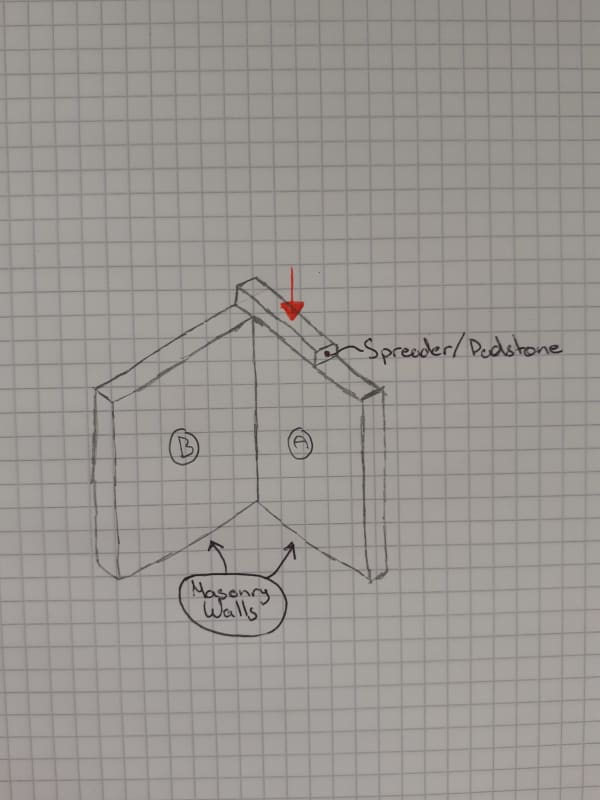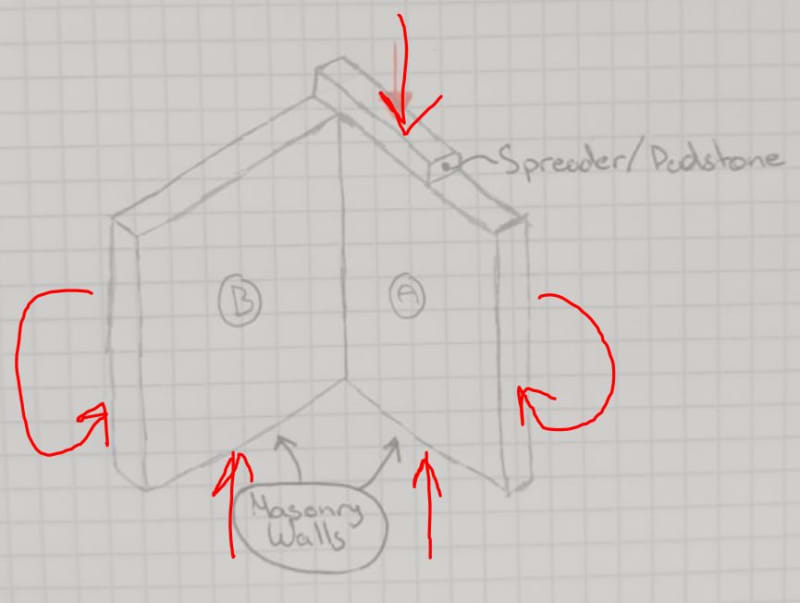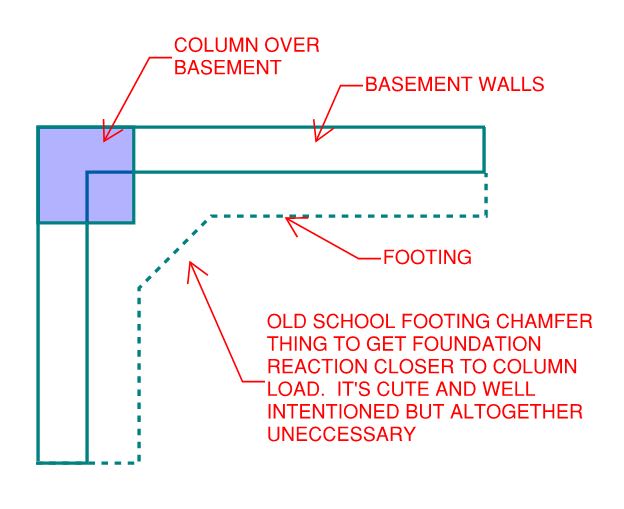IreStruEng
Structural
Hi everyone,
My first post so I hope I'm linking the photo correctly. In the attached image I am verifying the spread of the point load and designing the wall. My own intuition is telling me that the spread will only be present through panel A and no load will be spread through panel B. I've never done masonry design before so please correct me if I'm incorrect.
Thanks

My first post so I hope I'm linking the photo correctly. In the attached image I am verifying the spread of the point load and designing the wall. My own intuition is telling me that the spread will only be present through panel A and no load will be spread through panel B. I've never done masonry design before so please correct me if I'm incorrect.
Thanks



